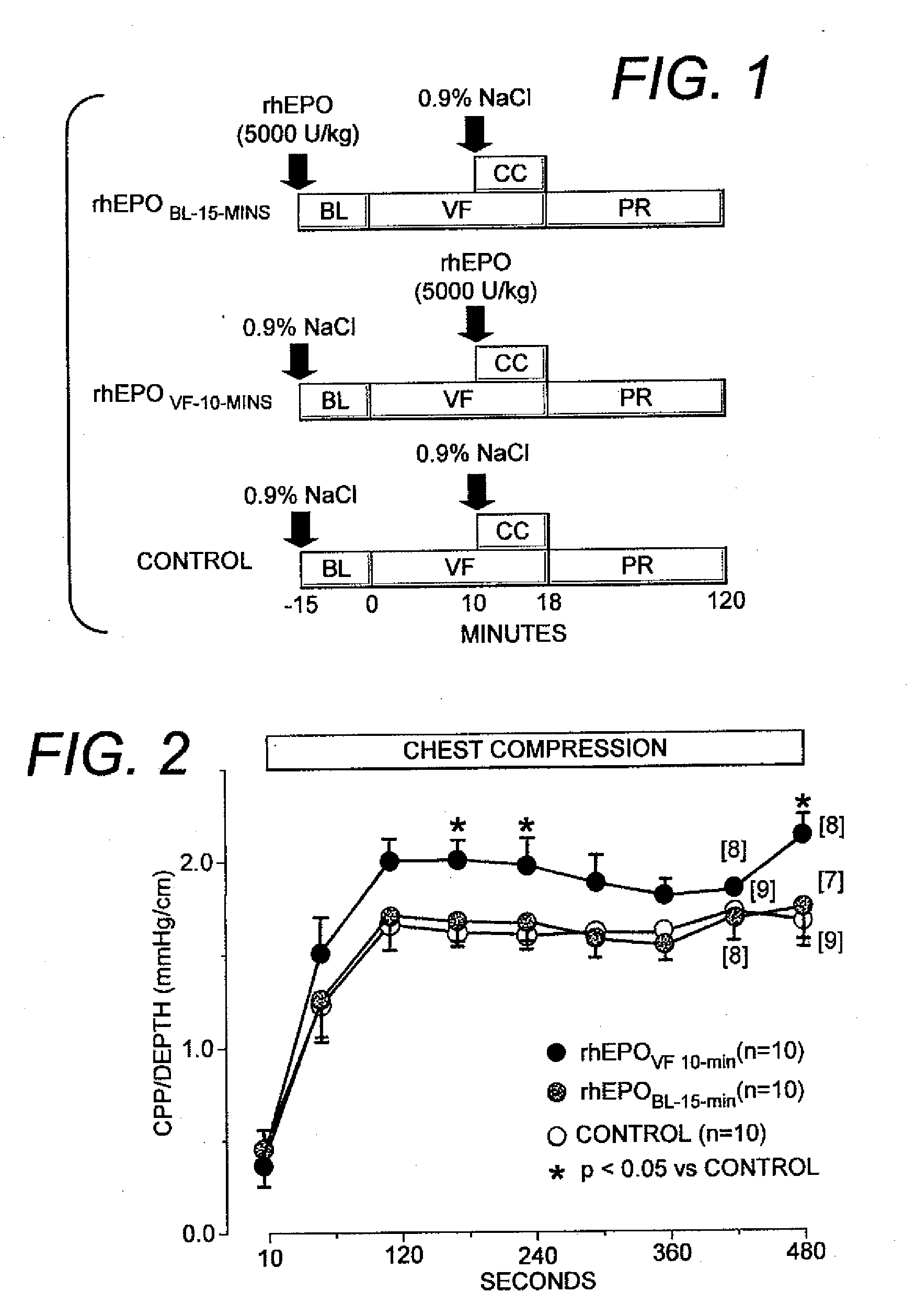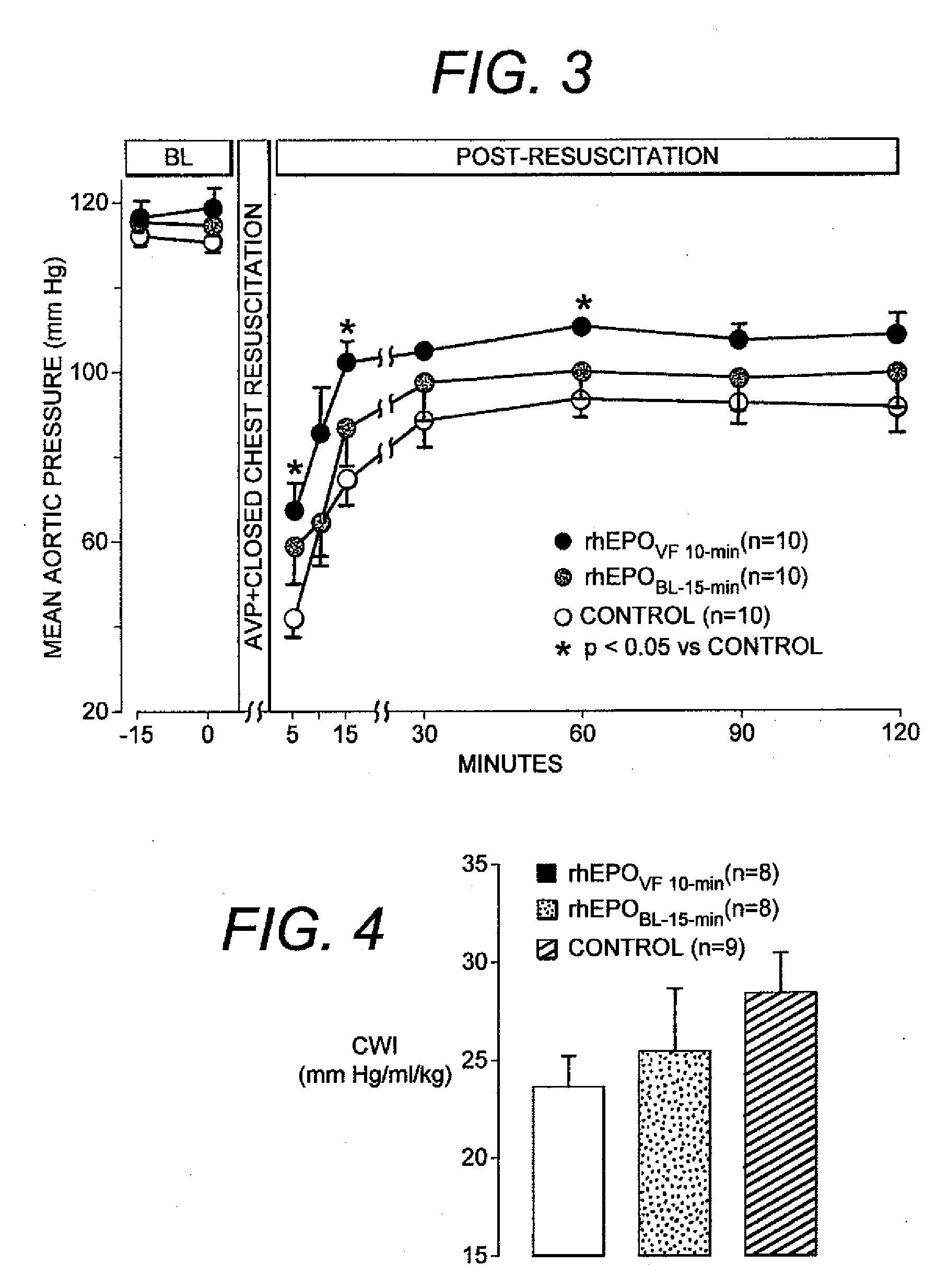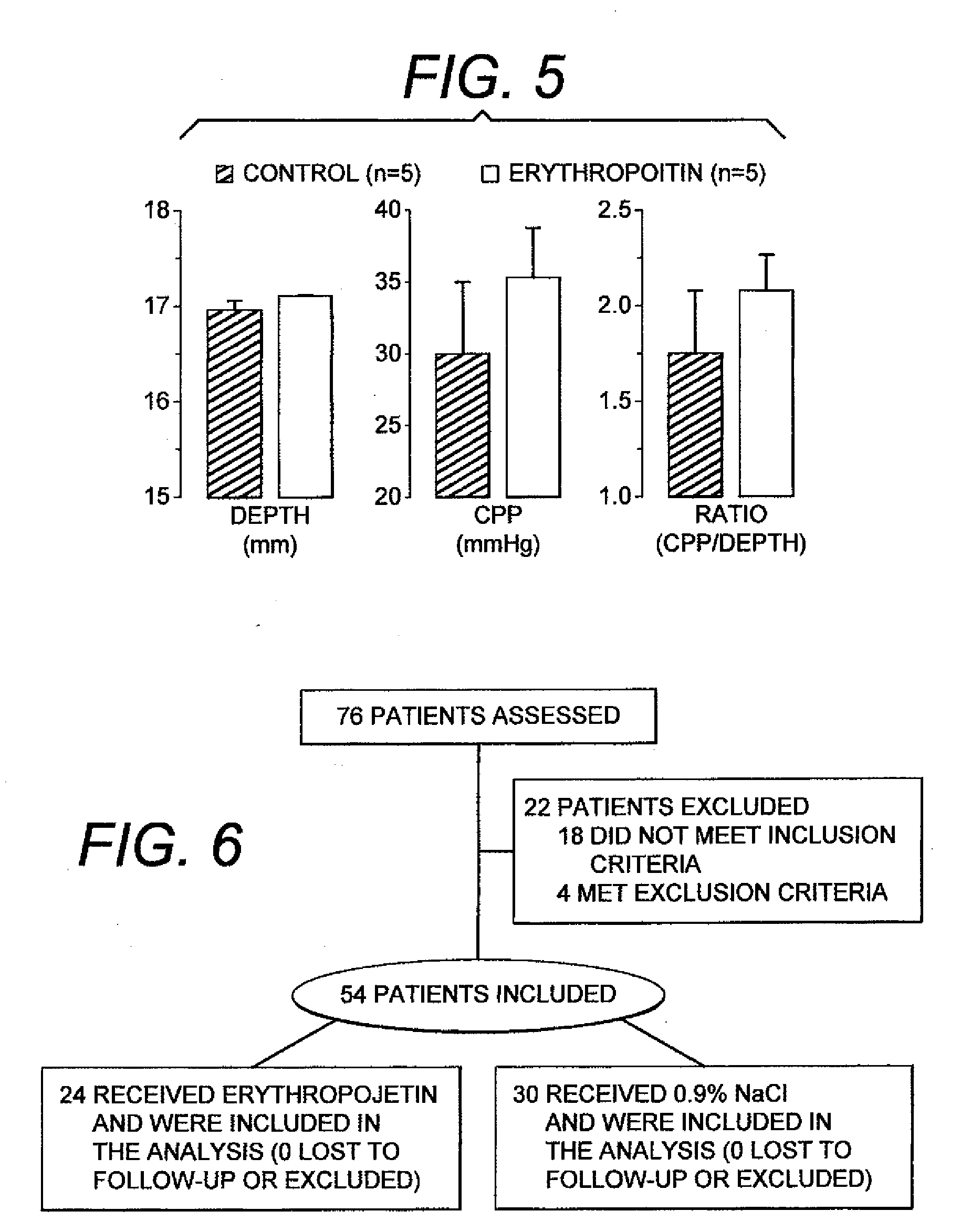Facilitation of resuscitation from cardiac arrest by erythropoietin
a technology of erythropoietin and cardiac arrest, which is applied in the direction of antinoxious agents, peptide/protein ingredients, extracellular fluid disorder, etc., can solve the problems of nearly 40% of deaths, efforts to successfully restore life are formidably difficult, and the percentage of individuals who are successfully resuscitated and leave the hospital alive with intact neurological function averages only 7% nationwide, so as to facilitate cardiac resuscitation
- Summary
- Abstract
- Description
- Claims
- Application Information
AI Technical Summary
Benefits of technology
Problems solved by technology
Method used
Image
Examples
example one
Rat Model Study Design
[0026]Studies were conducted in a rat model of ventricular fibrillation and closed-chest resuscitation to assess the effects of the interventions (in this case, the intervention is the administration of EPO) on the hemodynamic efficacy of chest compression, resuscitability, post-resuscitation ectopic activity, post-resuscitation myocardial function, and short-term survival.
[0027]The ventricular fibrillation model is significantly different than the coronary occlusion models used by others in studying cardioprotection from ischemia and reperfusion injury. In the ventricular fibrillation model used in the present disclosure, ventricular fibrillation is induced by delivering a 60-Hz alternating current to the right ventricular endocardium. This, results in cessation of the organized activity of the heart required for effective work as a pump leading to cessation of total body blood flow. Moreover, the myocardial ischemia induced by ventricular fibrillation is glob...
example two
Human Model Study Design
[0038]The preceding observations in rats prompted a study in humans aimed at determining whether EPO administered during cardiopulmonary resuscitation (CPR) in victims of out-of-hospital cardiac arrest could improve resuscitation outcomes (Grmec S, Strnad M, Kupnik D, Sinkovic A, and Gazmuri R J. Erythropoietin facilitates the return of spontaneous circulation and survival in victims of out-of-hospital cardiac arrest. Resuscitation 2009; 80:631-7). The study design took into consideration key observations made in the rat experiments. Accordingly, EPO was administered early during the resuscitation effort and end-tidal PCO2 (PETCO2) was measured to estimate the hemodynamic efficacy of chest compression. The human study was conducted in the city of Maribor, Slovenia by a physician-led prehospital resuscitation team.
[0039]The human study was approved by the Ethical Board of the Ministry of Health of the Republic of Slovenia, granting waiver of the informed conse...
PUM
| Property | Measurement | Unit |
|---|---|---|
| volume | aaaaa | aaaaa |
| temperature | aaaaa | aaaaa |
| temperature | aaaaa | aaaaa |
Abstract
Description
Claims
Application Information
 Login to View More
Login to View More - R&D
- Intellectual Property
- Life Sciences
- Materials
- Tech Scout
- Unparalleled Data Quality
- Higher Quality Content
- 60% Fewer Hallucinations
Browse by: Latest US Patents, China's latest patents, Technical Efficacy Thesaurus, Application Domain, Technology Topic, Popular Technical Reports.
© 2025 PatSnap. All rights reserved.Legal|Privacy policy|Modern Slavery Act Transparency Statement|Sitemap|About US| Contact US: help@patsnap.com



